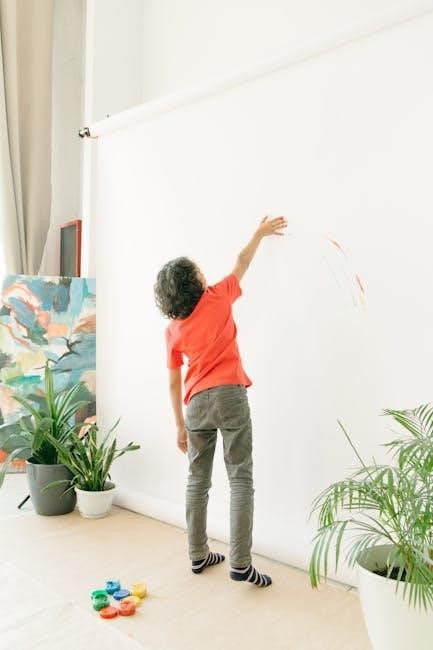Expressive Art Therapy combines creative activities like painting, music, and movement to promote emotional healing and self-expression. It offers a non-verbal outlet for processing feelings and experiences, fostering personal growth and resilience. This therapeutic approach integrates various art forms to encourage individuals to explore and communicate emotions effectively, making it a powerful tool for mental and emotional well-being.
1.1 Definition of Expressive Art Therapy
Expressive Art Therapy is a therapeutic approach that intentionally uses multiple creative modalities, such as visual art, music, movement, drama, and writing, to foster emotional expression and healing. Unlike traditional art therapy, which may focus solely on visual art, expressive art therapy integrates various art forms to promote psychological growth and well-being. It emphasizes the process of creation rather than the final product, allowing individuals to explore and communicate emotions non-verbally. This holistic approach encourages self-awareness, resilience, and personal transformation by tapping into the therapeutic potential of creative expression.
1.2 Comparison with Traditional Art Therapy
Expressive Art Therapy differs from traditional art therapy in its broader scope and integration of multiple creative modalities. While traditional art therapy often focuses on visual art forms like painting or drawing, expressive art therapy incorporates music, movement, drama, and creative writing. This multimodal approach allows for a more comprehensive exploration of emotions and experiences. Additionally, expressive art therapy emphasizes the therapeutic potential of the creative process itself, rather than solely the final product. It also places a strong emphasis on verbal processing and reflection, making it a more integrative and dynamic form of therapy compared to traditional approaches.
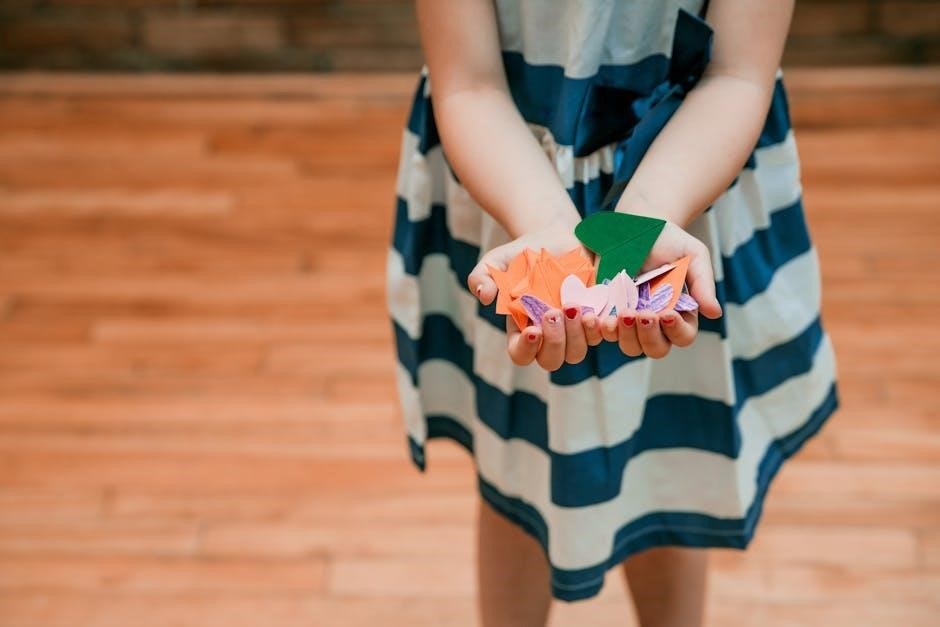
Benefits of Expressive Art Therapy
Expressive Art Therapy fosters emotional healing, stress reduction, and self-awareness through creative expression. It provides a meditative outlet for processing emotions, enhancing mental and emotional well-being.
2.1 Key Benefits Overview
Expressive Art Therapy offers numerous benefits, including stress reduction, emotional processing, and enhanced self-awareness. It provides a non-verbal outlet for individuals to communicate feelings, fostering resilience and personal growth. By engaging in creative activities, participants can explore and understand their emotions better, leading to improved mental health. This therapeutic approach also encourages self-expression, helping individuals gain insight into their experiences and develop coping strategies. The integration of various art forms makes it accessible to diverse populations, promoting overall well-being and emotional healing.
2.2 Stress Reduction Techniques
Expressive Art Therapy offers effective stress reduction techniques through creative engagement. Activities like painting, drawing, and music provide a meditative outlet, reducing anxiety and promoting relaxation. The process of creating art allows individuals to express and manage stress in a non-verbal manner, fostering a sense of calm. By focusing on the creative process, participants can shift attention away from stressful thoughts, gaining emotional relief. These techniques encourage mindfulness and emotional release, helping individuals develop healthier coping mechanisms. The therapeutic benefits of art-making contribute to overall well-being, making Expressive Art Therapy a valuable tool for stress management and emotional balance.
2.3 Emotional Processing Through Art
Expressive Art Therapy provides a powerful medium for emotional processing, allowing individuals to explore and express complex feelings through creative activities. Art serves as a non-verbal bridge between the subconscious and conscious mind, enabling individuals to convey emotions that may be difficult to articulate verbally. Techniques like painting, drawing, and mask-making help clients represent inner emotions visually, fostering self-reflection and understanding. By engaging in these activities, participants can process traumatic experiences, identify emotional patterns, and gain insight into their internal world. This therapeutic process promotes emotional healing, self-awareness, and personal growth, making it an effective tool for addressing emotional challenges and fostering resilience.
Popular Expressive Art Therapy Activities
Popular activities include painting, drawing, mask-making, and mixed media techniques, allowing individuals to explore emotions creatively and foster self-expression, promoting emotional exploration and healing through art.
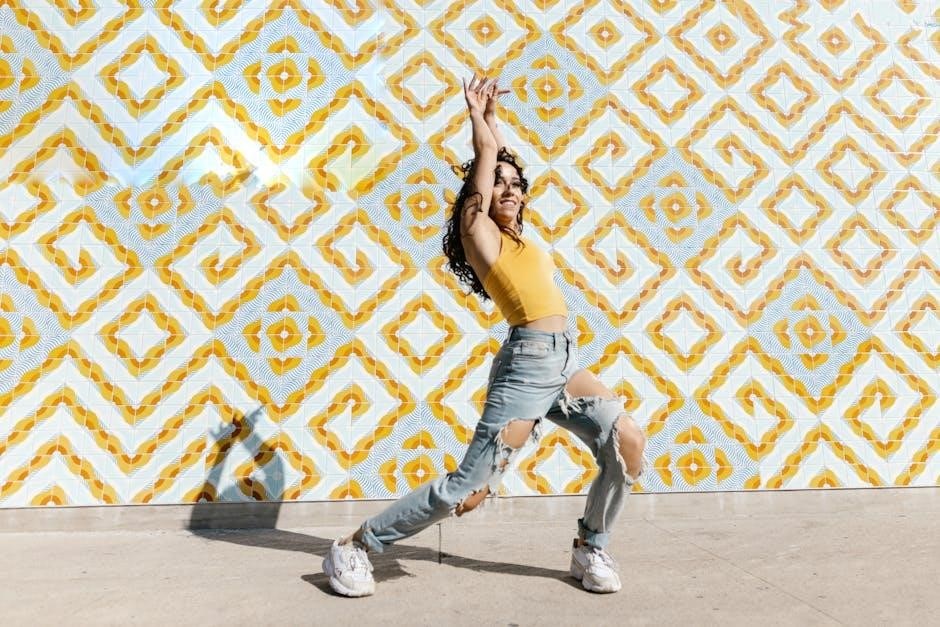
3.1 Painting and Drawing Exercises
Painting and drawing exercises are cornerstone activities in expressive art therapy, offering a non-verbal means of communication. These exercises allow individuals to express emotions, thoughts, and experiences that may be challenging to articulate verbally. Techniques include free-form drawing, guided imagery, and themed painting, which encourage self-reflection and emotional processing. Materials like crayons, markers, and paint provide diverse ways to explore creativity. Directed exercises, such as creating a “safe place” or illustrating emotions through color, help clients tap into their inner world. These activities not only foster personal insight but also empower individuals to communicate feelings in a meaningful and therapeutic manner.
3.2 Mask-Making Therapy
Mask-making therapy is a powerful expressive art activity that allows individuals to explore their inner and outer selves. Clients are provided with materials like paper mâché or plastic masks and various art supplies to decorate them. The outside of the mask often represents the persona shown to the world, while the inside reflects hidden emotions or protected aspects of the self. This activity encourages self-reflection and emotional processing, helping individuals identify discrepancies between their public and private identities. The creation and discussion of the mask foster deeper insight and understanding, making it a therapeutic tool for personal growth and emotional awareness. This exercise is particularly effective in addressing identity, trauma, and self-perception issues.
3.3 Mixed Media Techniques
Mixed media techniques in expressive art therapy combine various art forms, such as painting, collage, and found objects, to create layered and textured compositions. This approach allows clients to experiment with diverse materials, fostering creativity and flexibility. By integrating different mediums, individuals can express complex emotions and experiences in a non-verbal manner. Mixed media encourages exploration of themes like identity, memory, and emotional states, while the tactile process of combining materials can be deeply therapeutic. This method is particularly effective for those who find it challenging to articulate their feelings verbally. It promotes self-expression, emotional processing, and personal growth, making it a versatile and empowering tool in therapy settings.
Activities for Specific Groups
Expressive art therapy offers tailored activities for children, adults, and families, addressing unique needs and fostering emotional growth through age-appropriate creative exercises and shared therapeutic experiences.
4.1 Therapeutic Activities for Children
Expressive art therapy for children involves engaging, age-appropriate activities that foster emotional expression and growth. Drawing, painting, and mask-making are popular, allowing kids to communicate feelings non-verbally. These exercises help children process emotions, build trust, and develop self-awareness. Activities like creating a “safe place” through art or designing a “feeling mask” encourage self-reflection and healing. Playful techniques, such as collaborative art projects or sensory-based exercises, promote social skills and creativity. These tailored interventions are particularly beneficial for children struggling with verbal communication, offering a safe and creative outlet to explore their inner world and emotions.
- Drawing and painting to express emotions.
- Mask-making to explore hidden feelings.
- Collaborative art for social development.
4.2 Art Therapy for Adults
Art therapy for adults offers a powerful medium for self-expression and emotional healing. Activities like painting, drawing, and mixed media allow individuals to explore complex emotions and experiences. Journaling alongside art pieces can deepen reflection and insight. Adults often benefit from structured exercises, such as creating a “resilience collage” or exploring emotional landscapes through abstract art. These activities foster stress reduction, self-awareness, and personal growth. They are particularly effective for addressing challenges like anxiety, trauma, or life transitions, providing a safe space for adults to process emotions and gain clarity. This form of therapy encourages creativity and introspection, empowering adults to navigate life’s complexities with greater resilience and understanding.
- Painting and drawing for emotional exploration.
- Mixed media techniques for self-expression.
- Journaling to deepen reflection and insight.
4.3 Family Therapy Activities
Family therapy activities in expressive art therapy are designed to enhance communication, understanding, and bonding among family members. These activities encourage collective expression, allowing families to explore dynamics and resolve conflicts through creative processes. Exercises like collaborative painting, shared collage-making, or creating a family sculpture foster teamwork and emotional connection. Activities may also include drawing a “family tree” or designing a “family crest,” which can reveal shared values and individual perspectives. Such therapies help families process challenges and strengthen relationships, providing a safe space for open dialogue and mutual understanding. These creative interactions often lead to deeper empathy and cooperation, promoting a healthier family environment.
- Collaborative painting or drawing projects.
- Shared collage or sculpture creations.
- Designing a “family tree” or “family crest.”

Guidelines for Facilitating Sessions
Creating a safe and supportive environment is crucial for effective expressive art therapy sessions. Encourage open expression, actively listen, and provide guidance while respecting the client’s creative process.
- Ensure a non-judgmental space for exploration.
- Use diverse art forms to cater to individual needs.
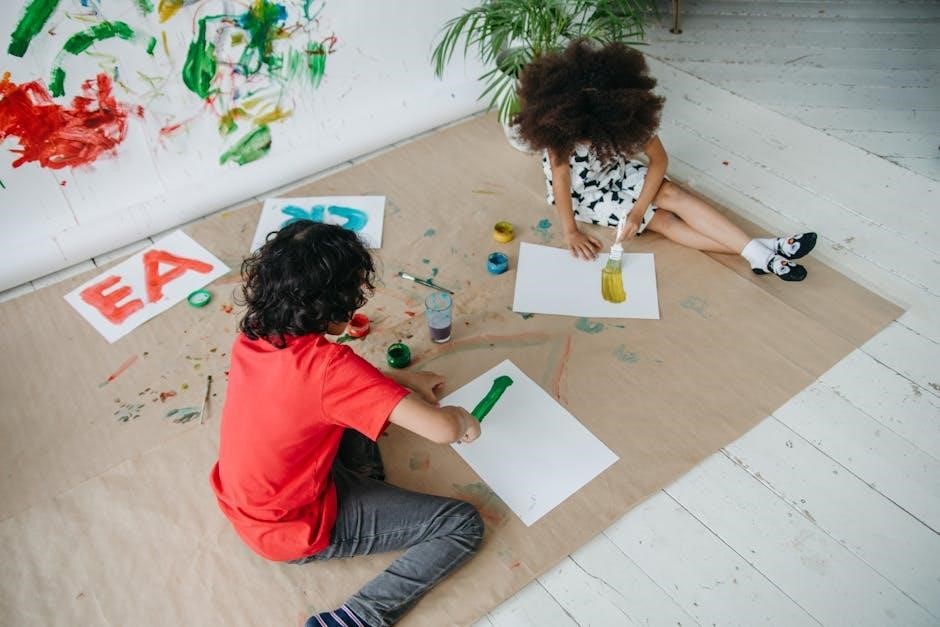
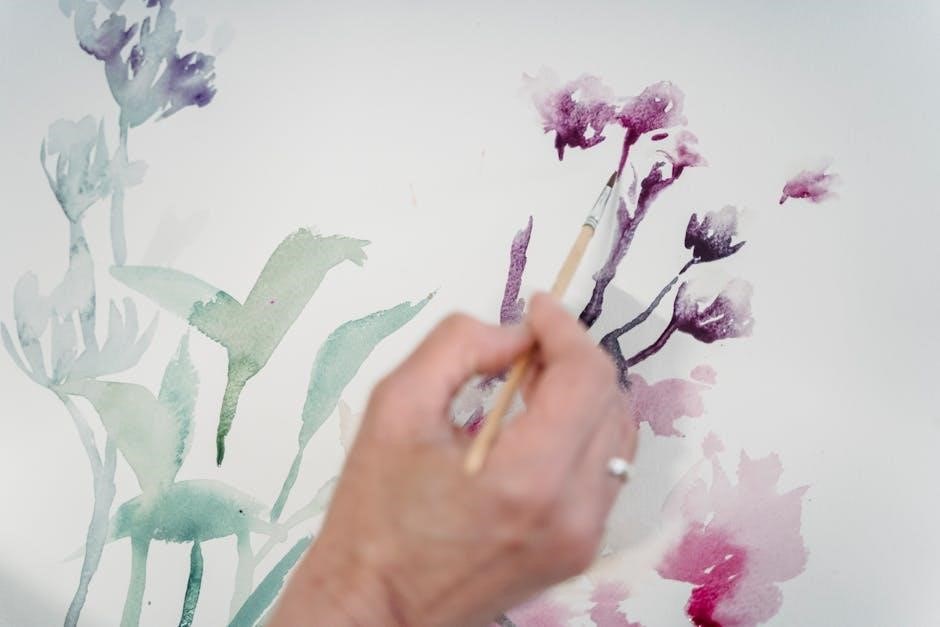
5.1 General Facilitation Guidelines
Effective facilitation of expressive art therapy sessions requires a structured yet flexible approach. Begin by establishing clear goals and ensuring clients understand the therapeutic process. Provide a variety of art materials to encourage exploration and creativity. Encourage clients to express freely without judgment, fostering a safe and supportive environment. Actively listen and offer guidance while respecting the client’s autonomy and unique creative journey. Be attuned to non-verbal cues and adapt activities to meet individual needs. Maintain a balance between direction and spontaneity, allowing clients to lead their therapeutic process. Document progress and reflections to track growth and provide meaningful feedback. Ensure confidentiality and cultural sensitivity throughout the session.
5.2 Creating a Safe Therapeutic Environment
Creating a safe therapeutic environment is essential for fostering trust and emotional exploration in expressive art therapy. Ensure the physical space is comfortable, free from distractions, and equipped with necessary art materials. Establish clear boundaries and confidentiality to promote a sense of security. Encourage open communication and validate clients’ feelings to build trust. Be empathetic and non-judgmental, allowing clients to express themselves freely. Provide reassurance and support while respecting their autonomy. A safe environment enables clients to engage deeply in the therapeutic process, fostering creativity and emotional healing. The therapist’s role is to create a nurturing space where clients feel empowered to explore and express their inner world.

Advanced Techniques in Expressive Art Therapy
Advanced techniques involve sensory exploration and resilience-building exercises, fostering deeper emotional engagement. These methods integrate multiple art forms to enhance creativity and promote profound healing experiences.
- Sensory-based techniques enhance emotional expression through tactile experiences.
- Resilience-building activities empower individuals to navigate life challenges creatively.
6.1 Sensory-Based Techniques
Sensory-based techniques in expressive art therapy engage the senses to deepen emotional exploration. Activities like tactile art, where clients use materials such as clay or sand, encourage physical expression of feelings. These exercises help individuals connect with their emotions on a primal level, fostering self-awareness and healing. Sensory exploration can also involve sound, movement, or textured art supplies, creating a multisensory experience that enhances therapeutic outcomes. By focusing on sensory input, clients can bypass verbal limitations and access emotions more directly, leading to profound insights and personal growth. These techniques are particularly effective for processing trauma and promoting mindfulness, making them a valuable component of advanced expressive art therapy practices.
6.2 Resilience-Building Activities
Resilience-building activities in expressive art therapy focus on empowering individuals to cope with challenges and adversity. Techniques such as creating a “Tree of Life” or “Resilience Collage” encourage clients to visually represent their strengths, support systems, and goals. These exercises help individuals identify and celebrate their ability to overcome difficult experiences. Art-making processes like painting or sculpting can symbolize transformation and growth, fostering a sense of control and confidence. By engaging in these activities, clients develop a positive mindset and learn to navigate life’s obstacles more effectively. These practices are particularly beneficial for trauma recovery and long-term emotional well-being, as they reinforce self-awareness and inner strength.
Expressive Art Therapy offers a transformative approach to mental health, combining creativity with therapeutic techniques to foster emotional healing. By engaging in activities like painting, music, and movement, individuals can process complex emotions and develop resilience. This form of therapy is uniquely accessible, requiring no prior artistic skill, and provides a safe space for self-expression. Through creative exploration, participants gain insights into their experiences, leading to personal growth and well-being. As a holistic practice, Expressive Art Therapy continues to empower individuals, making it a valuable tool in modern mental health care.
